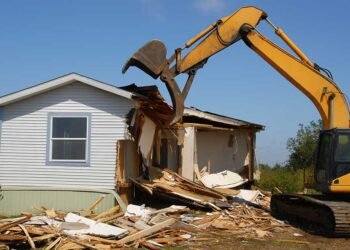Accessory Dwelling Units (ADUs) are becoming increasingly popular as versatile living spaces that serve multiple purposes. From accommodating family members to generating rental income, ADUs offer a range of benefits. However, the magic happens when you customize your ADU to suit your needs and lifestyle. We’ll delve into the world of customized ADUs, exploring their advantages, design possibilities, cost considerations, and the process of creating your dream ADU. You can also go to My ADU website for further information.
Unlocking the Potential of Customized ADUs: Advantages, Design Options, Costs, and Creation Process
Advantages of Customized ADUs
One of the primary advantages of customizing an ADU is maximizing space utilization. Unlike pre-built structures that may not fully meet your requirements, a customized ADU allows you to optimize every square foot according to your needs. Whether you’re looking to create a cozy studio apartment, a spacious home office, or a comfortable guest suite, customization offers flexibility and functionality.
Customized ADUs also enhance property value and appeal. A well-designed, tailored ADU can significantly increase your property’s marketability and overall value. This is especially beneficial if you plan to sell or rent your property, as a thoughtfully designed ADU can attract higher rental income or resale value.
Another key advantage is the ability to personalize the aesthetics and layout. With a customized ADU, you can choose design elements, finishes, and layouts that align with your style preferences and functional requirements. Whether you prefer a modern, minimalist look or a cozy, traditional feel, customization allows you to create a space that reflects your personality and taste.
Furthermore, customized ADUs offer greater efficiency and sustainability. By incorporating energy-efficient features, sustainable materials, and intelligent technologies, you can reduce energy consumption, lower utility bills, and minimize environmental impact. This benefits you as a homeowner and contributes to a greener, more sustainable future.
Design Possibilities for Customized ADUs
When designing a customized ADU, the possibilities are virtually endless. You can choose from various architectural styles, floor plans, and interior layouts to create a space that meets your needs and preferences. Here are some design ideas to consider:
- Multi-functional Spaces: Design your ADU to serve multiple functions, such as a combination of a living area and home office or a studio apartment with a convertible bed/dining area. This maximizes versatility and usability, especially in smaller ADUs.
- Open Concept Layouts: Opt for an open floor plan that creates a sense of spaciousness and flow. This is particularly effective in smaller ADUs, where eliminating unnecessary walls can make the space feel larger and more inviting.
- Outdoor Integration: If your property allows, consider integrating outdoor living spaces into your ADU design. This could include a private patio, deck, or garden area, enhancing the space’s overall livability and appeal.
- Customized Storage Solutions: Incorporate clever storage solutions such as built-in shelving, hidden cabinets, and multi-purpose furniture to maximize storage without sacrificing aesthetics or functionality.
- Natural Light and Ventilation: Your ADU design should prioritize natural light and ventilation. Large windows, skylights, and strategically placed openings can enhance daylighting and airflow, creating a bright, airy environment.
- Smart Home Features: Incorporate smart home technologies such as automated lighting, thermostats, and security systems to enhance comfort, convenience, and energy efficiency.
While exploring these design possibilities, it’s important to also consider practical guidance from experienced professionals. Searching online for “ADU builder near me” can help you find local contractors who specialize in designing and constructing ADUs, ensuring your project stays on budget while meeting your specific requirements. Working with a skilled builder can save time, reduce unexpected costs, and provide peace of mind throughout the entire process.
Cost Considerations and Budgeting for Customized ADUs
While customization offers numerous benefits, it’s essential to consider the cost implications and budget accordingly. The cost of a customized ADU can vary significantly depending on various factors, including size, design complexity, materials, labor costs, and location. Here are some key cost considerations and budgeting tips:
- Initial Consultation and Design Phase: Allocate a portion of your budget for the initial consultation with an architect or designer. This phase involves discussing your requirements, developing design concepts, and creating detailed plans and drawings for your customized ADU.
- Construction Costs: The construction costs of a customized ADU can vary based on factors such as site preparation, foundation type, framing, roofing, insulation, plumbing, electrical work, HVAC systems, interior finishes, and permits. Obtain detailed quotes from contractors or builders to estimate these costs accurately.
- Permitting and Regulatory Fees: Factor in permit fees, impact fees, utility connections, and any other regulatory requirements imposed by local authorities. These costs can vary widely depending on your location and the specific regulations governing ADUs in your area.
- Contingency Fund: It is advisable to set aside a contingency fund of around 10-20% of your total budget to account for unexpected expenses, design changes, or unforeseen challenges that may arise during the construction process.
- Long-Term Costs: Consider the long-term costs of owning and maintaining a customized ADU, including property taxes, insurance, utilities, repairs, and maintenance. Factor these expenses into your overall budget and financial planning.
Customized ADUs represent a unique opportunity to create personalized, functional, and sustainable living spaces catering to your needs and preferences. By leveraging design flexibility, innovative solutions, and strategic planning, you can unlock your property’s full potential and enhance its value, livability, and versatility. Whether you’re looking to accommodate family members, generate rental income, or improve your lifestyle, a customized ADU offers endless possibilities for creativity, efficiency, and comfort in today’s dynamic housing landscape.












